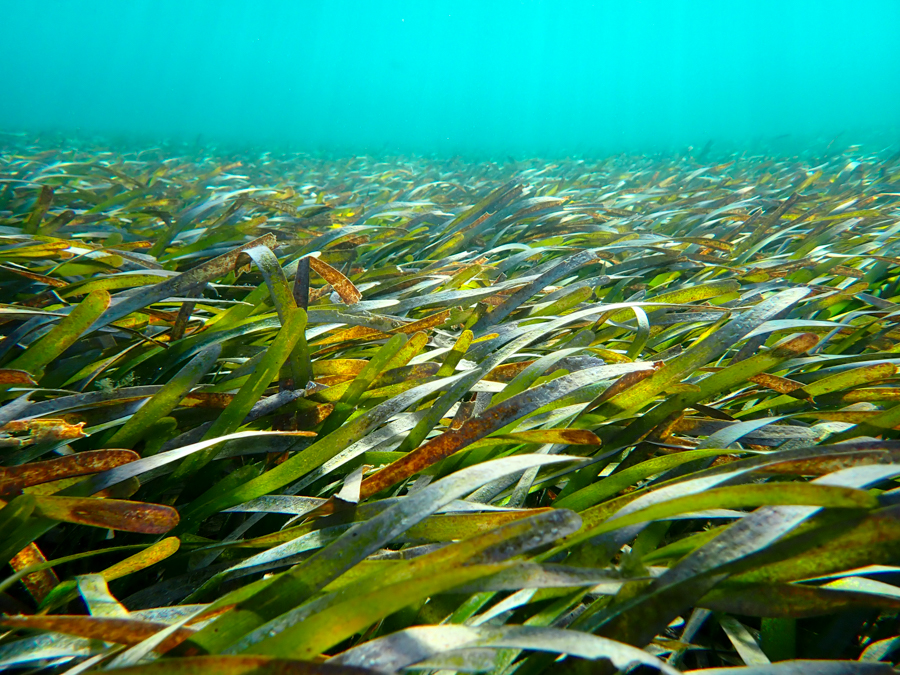Coral communities on the first two islands in the Australs were very unusual, compared to all other reefs we looked at in French Polynesia. Unlike other fore reef communities, a very wide shelf surrounded each island, extending from the reef crest, adjacent to the lagoon, hundreds of meters offshore before plunging steeply to the depths.
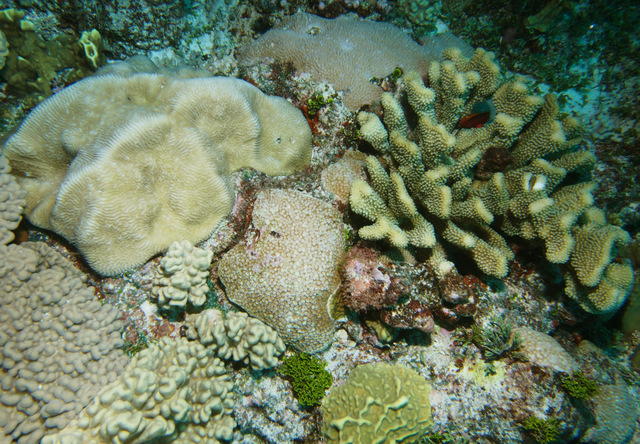
Austral Coral Communities: Raivavae and Tubuai
The shallow reef transitioned from a high energy reef crest dominated by branching corals, mostly stout finger corals and thick tables of Acropora and cauliflower corals (Pocillopora), to a spur and groove structure with narrow scoured hard-bottom channels and wide flattened spurs. The spurs in shallow water (to 10 m depth) were constructed mostly of low-lying massive star corals (Astreopora), with some larger outcrops containing other massive species such as Favia and a brain coral (Leptoria) seen previously only in Mangareva, along with short, stout branched and digitate Acroporids and Pocillopora.
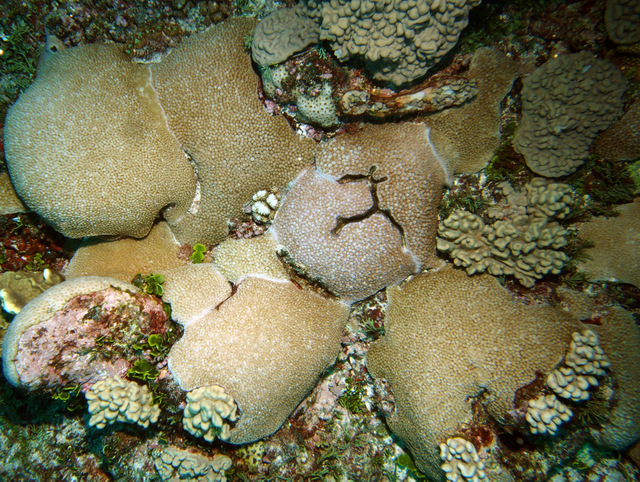
From 10-15 m deep, the grooves were colonized by small pore corals (Porites) and an unusual massive coral we had not seen before (Hydonophora), while other encrusting, plating and boulder corals were found on the tops of the spurs. We also found another unique coral which forms potato-chip shaped colonies and extends its yellow to lime green polyps in the day (Turbinaria) and several other sheeting corals on the sides of spurs.
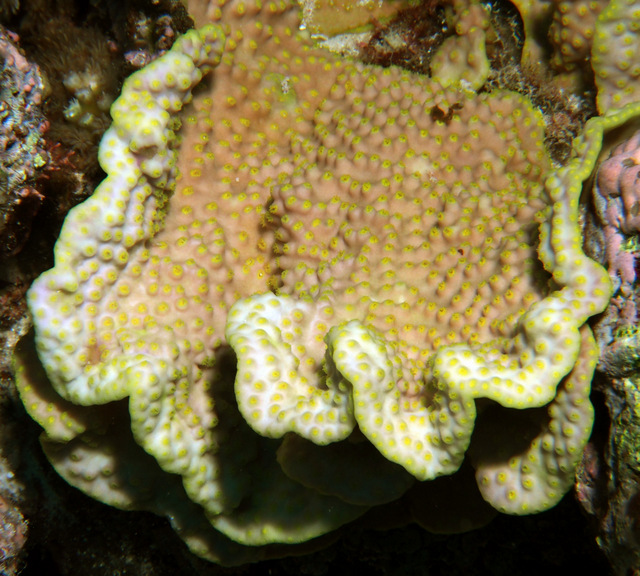
Many areas from 5-15 m depth had high numbers of soft corals, many of which were over 2 m in diameter. In deeper water, the reef gradually transitions from Astreopora to a community with very dense cover of large massive and lobate corals (Favia stelligera, Pavona clavus), flower corals (Lobophyllia) and dense thickets of stout-branched staghorn corals (Acropora). At 20-25 m deep another species that forms large tables (Acropora cytherea) becomes abundant; the only other place we observed this species was in Mangareva. Still deeper, these are progressively replaced by large flattened domes of pore coral (Porites), some that are over 5 m in diameter and centuries old.
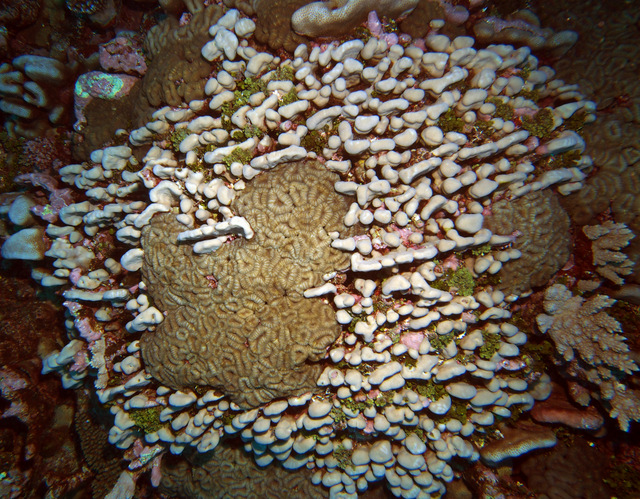
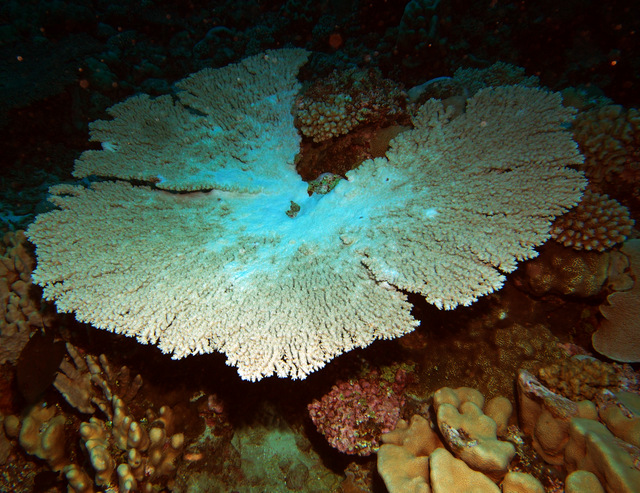
(Photos by Andrew Bruckner)
To follow along and see more photos, please visit us on Facebook!


